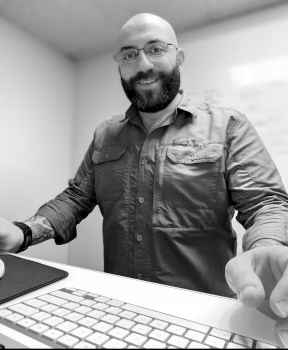
In today’s hyper-connected, cloud-dominated tech landscape, it’s easy to forget that some of the most valuable engineering skills aren’t about learning the latest framework or mastering Kubernetes. One of the most underrated yet crucial abilities remains the art of troubleshooting—a process that goes beyond surface-level fixes and delves into the root causes of complex technical issues. Whether in IT, software development, or systems engineering, effective troubleshooting is essential for sustaining reliable infrastructure and ensuring long-term performance.
The Generations Who Mastered the Craft
Those who came of age during the personal computing boom—primarily Generation X and early Millennials—often excelled at troubleshooting because they had no other choice. These were the generations that built their own PCs, hand-edited configuration files, and fixed modem issues by reading obscure forum posts or reverse-engineering driver settings. With limited online documentation and primitive support structures, learning to troubleshoot was not just a skill—it was survival. This environment produced engineers who were resourceful, patient, and persistent, often capable of diagnosing and fixing problems across an entire technology stack without a formal guidebook.
That “get-your-hands-dirty” mentality, honed through years of trial-and-error learning, contrasts sharply with the plug-and-play simplicity offered by today’s tech stacks. Back then, solving a problem required a deep understanding of the systems involved—hardware, software, protocols, and everything in between. These engineers became masters of context: able to see how one change in a system could ripple across others. That mindset remains incredibly valuable, even if the environments have changed.
The Cloud Shift and the Fade of Troubleshooting
In recent years, the rise of cloud services, managed platforms, and serverless architectures has abstracted much of the technical depth once required to operate systems. Engineers no longer have to configure bare-metal servers or optimize database performance manually. With a few clicks or a simple API call, entire environments can be provisioned, deployed, and scaled. While this has greatly accelerated development cycles and increased accessibility, it has also diminished the hands-on technical exposure that fosters traditional troubleshooting skills.
Today’s engineers often work within layers of abstraction where many of the low-level details are hidden. When something breaks, the response is often procedural: restart the service, redeploy the container, or roll back the commit. Root cause analysis takes a back seat to fast remediation, and the intricate process of piecing together logs, reproducing errors, and tracing dependencies has become the exception rather than the norm. As a result, the skill of deep troubleshooting is slowly becoming specialized—relegated to “SREs,” infrastructure teams, or third-party support engineers.
Replacing Troubleshooting with Workarounds
This shift in culture has led to a growing reliance on short-term fixes and workarounds. When confronted with a production issue, many teams opt to revert to a stable state rather than investigate the source of the problem. While this approach aligns well with agile methodologies and minimizes business disruption, it can also lead to technical debt and recurring failures. Without understanding the why behind a failure, teams risk building systems that are brittle, opaque, and ultimately unmanageable.
Moreover, vendor support and external services have become a first line of defense. Many teams open support tickets with cloud providers or third-party vendors rather than diagnose problems internally. This externalization of troubleshooting can slow down incident response and make organizations overly reliant on partners who may not have complete visibility into the custom aspects of their systems. In some cases, teams may never fully understand what went wrong—only that it started working again.
AI as a New Player in Troubleshooting
Amid this changing landscape, artificial intelligence is emerging as a powerful force to bridge the troubleshooting gap. Tools built on machine learning, anomaly detection, and predictive analytics—collectively known as AIOps—can now analyze massive streams of telemetry data (logs, metrics, traces) to detect problems in real time and even suggest root causes or auto-remediation steps. These platforms, such as Datadog, Dynatrace, and Splunk Observability Cloud, can uncover subtle patterns and correlations that human engineers might miss, especially under pressure.
While AI can’t fully replace human insight—particularly in novel or poorly documented systems—it can augment the troubleshooting process by eliminating much of the manual data-gathering and narrowing down potential causes. In doing so, AI is helping to preserve the discipline of troubleshooting in an era where fewer engineers are developing it firsthand. In a sense, it’s helping translate the hard-earned wisdom of past generations into something usable and scalable for today’s cloud-native world.
Conclusion: A Skill Worth Preserving
Despite the conveniences of modern infrastructure, troubleshooting remains a critical skill for engineers who want to deeply understand and effectively maintain the systems they build. As technology continues to evolve, the combination of human intuition, systemic thinking, and AI-assisted analysis will define the new frontier of technical problem-solving. Rather than letting it fade into obsolescence, we should recognize troubleshooting as a competitive advantage—one that distinguishes great engineers from merely competent ones.

Technologist, Cloud Promoter, Automation and Continuous Optimization Advocate.